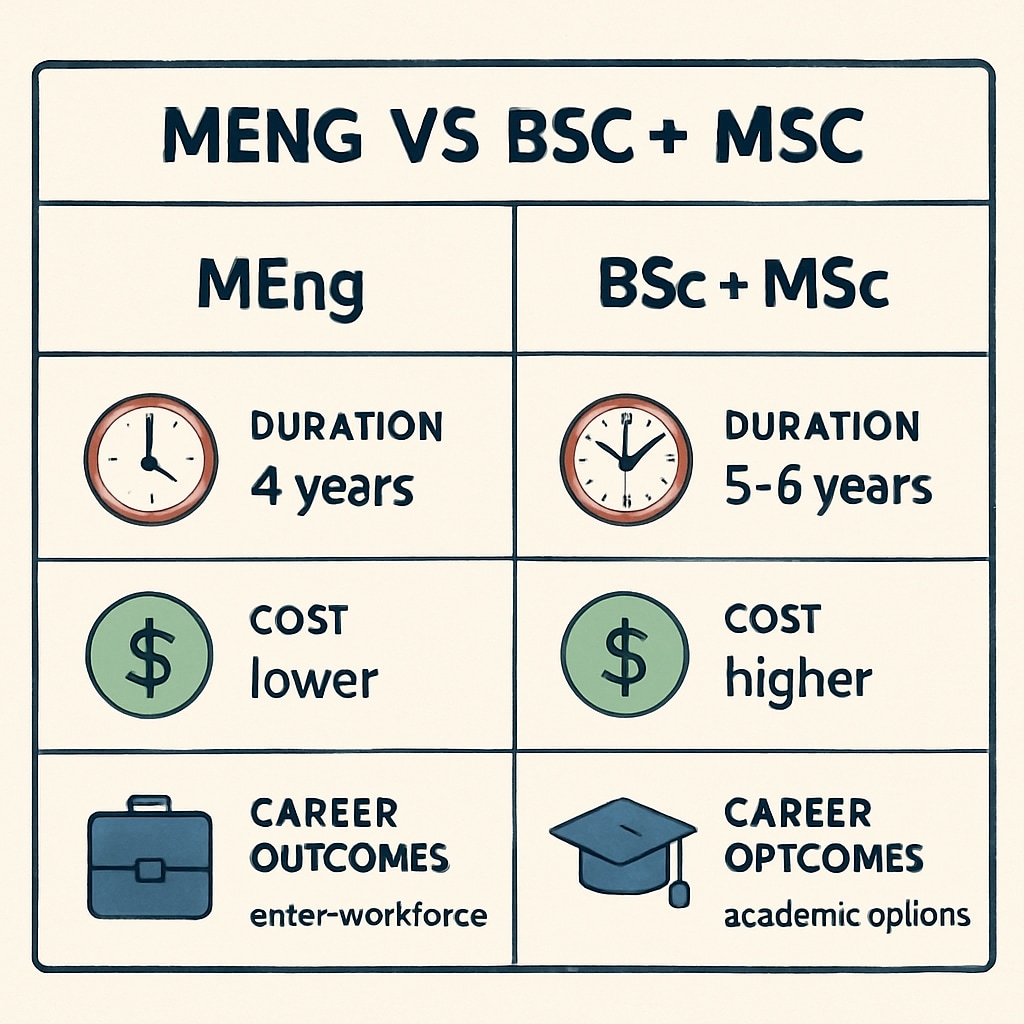Choosing the right educational pathway in design engineering is a pivotal decision for students and their families. Whether opting for an integrated Master of Engineering (MEng) or a combination of Bachelor of Science (BSc) and Master of Science (MSc), this choice can significantly influence career prospects and professional development. This article provides a comprehensive analysis of these two academic routes, helping prospective students weigh their options and align their decisions with long-term career goals.

The Structure and Benefits of MEng Programs
An MEng (Master of Engineering) program typically integrates undergraduate and graduate studies into one continuous curriculum, often lasting four to five years. This streamlined approach offers several advantages:
- Time Efficiency: Students complete both degrees in a shorter timeframe compared to pursuing a BSc and MSc separately.
- Cost Savings: Combined tuition fees are often lower than the cumulative cost of a separate bachelor’s and master’s program.
- Industry Recognition: Many employers view MEng as a hallmark of advanced technical expertise and leadership potential.
However, the intensity of MEng programs can be demanding, requiring students to commit fully to a single academic trajectory. For those who are certain about their career aspirations in design engineering, this path can be ideal.

BSc+MSc: Flexibility and Specialization
The BSc+MSc route offers greater flexibility and the opportunity to specialize. Students first complete a bachelor’s degree, often in design engineering or a related field, and then pursue a master’s degree tailored to their interests. Key benefits include:
- Customization: MSc programs allow students to choose specialized areas such as sustainable design, robotics, or product innovation.
- Broader Exploration: The gap between BSc and MSc enables students to gain work experience or refine their career focus.
- International Opportunities: Students may pursue their MSc at a different institution, often abroad, expanding their academic and professional network.
While this pathway requires more time and financial investment, it appeals to individuals who value flexibility and tailored academic experiences.
Career Implications: MEng vs. BSc+MSc
When considering career outcomes, both MEng and BSc+MSc graduates are well-equipped for roles in design engineering. However, the choice can influence job opportunities and long-term growth:
- MEng Graduates: Often fast-tracked into leadership roles or technical positions in industries such as automotive design, aerospace engineering, and product development.
- BSc+MSc Graduates: May have an edge in niche areas due to their specialized MSc training, particularly in emerging fields like green technology or AI-driven design.
Ultimately, the decision depends on individual priorities. Students aiming for rapid entry into the workforce may prefer the MEng, while those seeking specialized expertise might opt for the BSc+MSc pathway.
Making an Informed Decision
To make the right choice, prospective students should consider:
- Personal Interests: Are you drawn to a specific aspect of design engineering, or do you prefer a broad approach?
- Career Goals: Do you envision yourself in a leadership role or as a specialist in a niche field?
- Financial and Time Constraints: Can you commit to a longer educational journey, or do you need a more cost-efficient option?
Consulting with academic advisors and industry professionals can provide valuable insights. Additionally, exploring internship opportunities during studies can help students gain clarity about their preferred career paths.
In conclusion, selecting between an MEng and a BSc+MSc in design engineering is a significant decision that shapes both academic and career trajectories. By carefully evaluating their goals and circumstances, students can confidently embark on the path that aligns with their ambitions.
Readability guidance: The article uses short paragraphs and lists to improve clarity and engagement. Transition words like “however,” “in addition,” and “for example” are incorporated to ensure smooth flow. The content avoids excessive academic jargon, making it accessible to high school students and their families.


